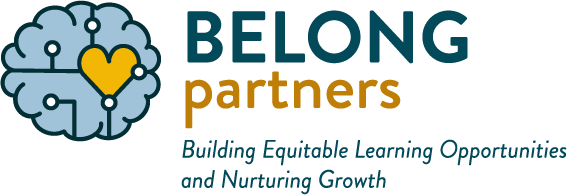We all have ways of dealing with mistakes based on our life experiences. Some of us can embrace them as a chance to fix and try to do better next time, and others struggle to acknowledge them. The reality is that human beings make mistakes. It is part of learning and being in community together.
Learning that mistakes are opportunities
When we create spaces in schools for students to repair, they learn that mistakes are opportunities. Respectful relationships between students and teachers and students and their peers are stronger and sustainable if we know how to reconnect after making mistakes. When a repair is made, reconnection is possible.
Sometimes, we as adults think that we shouldn’t apologize to youth or feel uncomfortable being vulnerable and acknowledging mistakes to children in our classrooms and school communities. Young people learn best by watching what the adults around them are doing. When adults make mistakes and model repairing mistakes, it is a powerful learning opportunity for youth.
When students make mistakes with each other it often results in hurt. In our classroom and school communities it is important to create a culture where students are supported to heal the harm caused to their peers and have opportunities to rebuild connection with each other.
Here are some ideas on ways to increase your skill and build your students practice around repair:
Wheel of Repair. Separated into sections like a pie, a Wheel of Repair is a visual representation of a community or individual student’s options for repairing hurt. Options can include: draw a picture/write a note, offer to help, give Kleenex or a Band-Aid, offer do an activity together, apologize, offer a hug or handshake. A Wheel of Repair gives students multiple ways to heal harm they may have caused and empowers them to take responsibility for their actions.
Class Meetings. A class meeting is a regular, 15 to 20-minute gathering in a circle that follows a format and uses an agenda. Students can add their individual and group problems to the agenda to solicit support from the rest of the class on problem solving, including how to repair their mistakes. This is an opportunity for students to take agency in their problem solving processes. Students experience helping each other fix mistakes and trying out different solutions.
Making Agreements. An option for repairing mistakes between teachers and students, or between anyone! To make an agreement, have a friendly discussion with the other person to gather information about what is happening regarding the problem, brainstorm possible solutions and choose a mutually agreeable solution. Be sure to follow through on your agreement.
Model and allow students to use the R’s of Recovery. After someone makes a mistake, participating in this process allows for healing and moving forward together in a healthy way.
Regather: Take the time to re-regulate and get calm.
Recognize & Take Responsibility: Acknowledge personally that you made a mistake and own your actions.
Reconcile: Offer a genuine apology. Be brief and genuine (no explanations or excuses).
Resolve: Commit to doing better next time. Ask the other person how you can fix your mistake and move forward together honoring any agreements you make.
